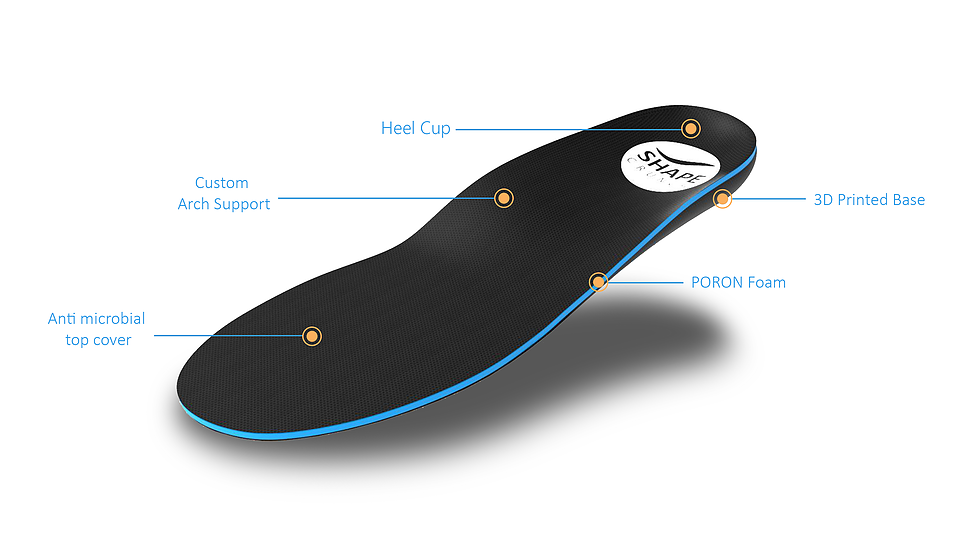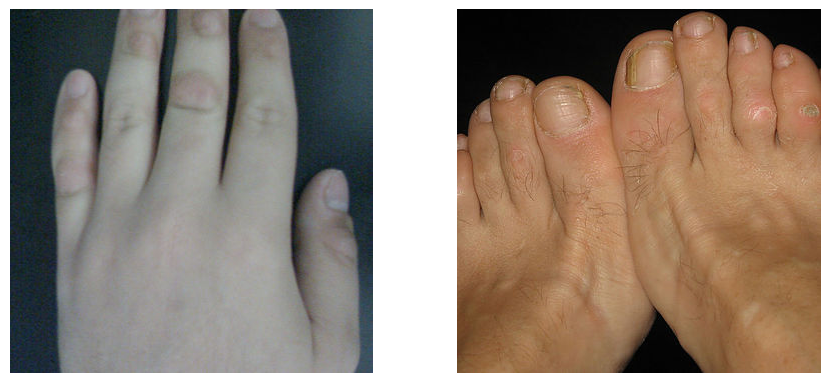nalco group
bone, muscle & joint pain physio
BOOK NOW / WHATSAPP ABOUT YOUR PAIN OR INJURY
- ORCHARD 400 Orchard Road #12-12 Singapore 238875
- TAMPINES 9 Tampines Grande #01-20 Singapore 528735
- SERANGOON 265 Serangoon Central Drive #04-269 Singapore 550265
Home > Customized Insoles > Customized Insoles For Calluses
Customized Insoles For Calluses
What Are Calluses?
When the skin is consistently exposed to friction or pressure, it gets thickened or hardened. This thickened part of the skin is a Callus.
They often happen on the feet, but they can occur on the hands, elbows, or knees. Calluses are yellowish or pale in color. It may be less sensitive to touch compared with the skin around it since the skin is thick in that area and they are lumpy to touch.
Calluses are often bigger and wider than corns, with less defined edges. The most common occurrence is in the places where the frequent rubbing of the skin against something, such as a bone, a footwear, or the ground.
They typically form over the bony area just under the toes, areas of skin that take the person's weight when they are walking. Calluses are mostly found on feet because of frequent walking and imperfect footwear since repeated contact is required.
Generally speaking, calluses are not harmful, but the problem occurs when they sometimes lead to other foot ailments, such as skin ulcers or infection. When the sufferer tries to offload the affected area, it places an excessive pressure on the asymptomatic side.
Why do Calluses Occur?
Hyperkeratosis simply means thickening of the skin.
As a natural defense mechanism to strengthens the skin in areas of friction or excessive pressure, the body thickens the skin.
Foot deformities such as hammertoe or another abnormal anatomy of the feet like, toe deformities and bony prominences in the feet, leads to the formation of callus.
Footwear that does not fit well or that exerts pressure or abrasion at specific points are also responsible for the skin thickening that consequently leads to the formation of calluses. Gait or movement abnormalities result in increased pressure to specific areas and hence can be responsible for the same.
Location- Calluses are located on the bottom of the foot, while corns are located on the top or between toes. Although it can be hard to determine the reason for the formation of finger callus as they often don't occur at sites of obvious pressure or friction.
Firmness- Calluses are hard all the way through to the skin.
CAUSES
Repetitive pressure and friction can lead to development and growth of calluses. Some sources of this pressure and friction include:
- Wearing ill-fitting shoes- Shoes that do not fit well and high heels exert a lot of pressure on your feet. Apart from these, footwear that is too loose, repeatedly slide and rub against your feet. Constant rubbing and abrasion of the foot against a seam or stitch inside the shoe may also cause callus.
- Not wearing socks- Wearing of shoes and sandals without socks results in friction on your feet against the footwear. Same goes for the socks that don't fit properly.
- Instruments and hand tools- The repeated pressure of playing instruments or using hand tools or even writing can result in the formation of callus.
RISK FACTORS
Other body abnormalities that can increase your risk of calluses:
- Bunions- A bunion is an abnormality in which there is a bony bump forming on the joint at the base of your big toe.
- Hammertoe- A hammertoe is a deformity in which your toe curls like a claw.
- Other foot deformities- Certain conditions, such as a bone spur, can cause constant rubbing inside your shoe.
- Unprotecting your hands- Using hand tools without wearing gloves exposes your skin to excessive friction.
What Are The Symptoms Of Calluses?
- A patch of compact, dead skin on the areas exposed to frequent friction.
- A small patch of hardened skin that has a dense core, located on top of a toe or the outside of the little toe.
- A reddened and tender area on the skin that has a smooth center and a very thin layer of skin. Very common between the toes.
- A plug-like circle of dead skin, often painful, on the heel or ball of the foot.
- A plantar callus is a callus on the bottom - or plantar - surface of the foot.
The Best Treatments For Calluses
If you are experiencing issues with your calluses such as bright redness around it or sore, signs of gangrene, fever, any drainage, increase in pain or swelling, it is critical to seek medical help as soon as possible because the problem will not be able to be resolved on its own.
Not seeking a professional medical resort in time will not only cause increasing pain but will also permanently and further damage your foot.
A dermatologist will recommend the following tips to treat callus:
- First, the callus needs to be soaked in warm water. After doing this for about five to 10 minutes or until the skin softens.
- File the callus with a pumice stone: You’ll have to dip the pumice stone in warm water, and then use it to gently file the callus. Use sideways or circular motions to remove dead skin over the affected area.
- Be careful not to take off too much skin: Doing so could cause bleeding and infection.
- Apply moisturizing lotion or cream to the area daily: Look for a moisturizing lotion or cream with salicylic acid, ammonium lactate, or urea. These things help to eventually soften the calluses.
- Use adhesive pads: To avoid further irritation during activity due to calluses, cut a piece of moleskin that is easily available at your local drugstore into two semi-circular shapes and place around the callus. To prevent callus from making contact with your shoe, surround it with small adhesive pads; these are also available at drugstores.
- Wear properly fitting shoes: One of the most common causes of callus is a shoe that isn’t of appropriate size or shape for your foot. The best way to find right fitting shoe is to shop for shoes at the end of the day. At this time your feet would be slightly swollen. In addition, get someone to measure your foot, and choose shoes that aren’t too loose or tight.
- Keep the toenails trimmed: When toenails grow longer, they can force the toes to push up against your shoe. This results in the formation of a callus over time. To avoid this abrasion, keep your toenails trimmed.
- Hard skin removal: A podiatrist may cut away some of the thickened skin using a sharp blade called a scalpel. This will relieve the pressure that is existing and resulting in callus on the tissue underneath.
Don't try to cut the corn or callus yourself. Doing this might make the affected area more painful and the skin might become infected. You can use a pumice stone or foot file to rub down skin that's getting thick.
-
Foot care products: Pharmacies
sell a wide range of products that allow thick, hard skin to heal.
These products help the excessive pressure to be redistributed. Consult a
podiatrist or pharmacist to recommend the right product for you.
Some of the products that are commonly used to treat the calluses are:
- special rehydration creams for thickened skin
- protective corn plasters
- customized soft padding or foam insoles
- small wedges of foam that can be placed between your toes to relieve callus
- special silicone wedges that change the position of your toes or redistribute pressure
- Salicylic acid: Some over-the-counter products used to treat corns and calluses may contain salicylic acid. Salicylic acid is used to help soften the top layer of dead skin so it can be easily removed. The products are mild and shouldn't cause any pain. Salicylic acid products are available for direct application (such as a liquid or gel) or in medicated pads or plasters.
- It's important to avoid products containing salicylic acid if you have:
- a condition that causes problems with circulation – such as diabetes, peripheral arterial disease or peripheral neuropathy
- cracked or broken skin on or around the corn or callus
- fragile skin
- This is because there's an increased risk of damage to your skin, nerves, and tendons.
-
Salicylic
acid can easily damage the skin surrounding a callus. It is better to
use petroleum jelly or a plaster to cover the skin around the callus.
- Podiatry: Podiatry is available these days. A podiatrist will examine your case individually
How Orthotics 3D Custom Insoles Helps With Calluses
Calluses are thick, hard layers of skin that develop based on friction and pressure. They most often develop on the sole or outsides of the feet, or on top of or in between the toes as the friction and pressure are highest in these areas.
Calluses are created by your body, as a defense mechanism, in response to high pressure or friction. They typically occur as a result of ill-fitting footwear (E.g. shoes that are too tight/too loose or high heels), abrasive sock seams, an injury, surgery, abnormal bony prominences (E.g. bunion bump or hammertoes) or as a result of how we walk.
There are various treatments available for calluses, including medications or addressing the biomechanical issue that is contributing to the high-pressure areas by wearing properly fitted shoes with custom orthotics.
Generally, cessation of the friction or pressure is enough to cause a corn or callus to gradually disappear.
An Orthotics 3D Custom Insole provides a surface to absorb that excess friction or pressure and thus relieving your feet from producing the hard layer of the skin.
What Orthotics 3D Custom Technology And How It Is Designed For The Calluses
Orthotic 3D custom insole uses 3D printing technology.
First of all, a complete biomechanical analysis is conducted using the latest foot scanning technology to capture the highest quality scan possible. With the use of most advanced 3D printers, the customized orthotics for Calluses is constructed based on the degree of altered biomechanics.
Accordingly, a custom Insole model is made to correct the Biomechanics of feet. The outermost layer of your skin (the stratum corneum above) is made of dead skin cells. As weird as it may sound, but that is how your skin is built.
These dead, flattened cells protect the living layers of skin underneath. Your body responds to this extra friction or pressure on your skin by creating more cells to join that outer, protective layer of dead skin.
These orthotics scan the area of your skin most prone or already affected by Callus and customize the insoles accordingly.

How Do We Design Insole For The Individual Foot
While designing the custom foot insole according to your foot shape, size and ulcer positioning (part vulnerable to body pressure), normally a standard industrial procedure is followed to ensure that every customization is done keeping individual requirements in mind. This may involve:
One can also select from various styles of footwear that he/she would like to have and insoles would be designed for the same.
The output result is very fine quality custom orthotic, created exclusively for your feet. Ask your foot specialist and make sure whether your custom made orthotics are made using the Orthotic Concept 3D digital process.
Benefits
The health issues caused due to foot pain hampers your healthy lifestyle. You should definitely consider the 3D custom insoles if you have a job that requires standing on your feet all day.
Constant pressure on your feet and consistent tasks performed while standing on hard, uncomfortable surfaces can leave you with recurring pain.
It may also lead to more serious foot problems in the future. Major benefits of these 3D Custom Insole with respect to Calluses are:
Customized Insoles (Shapecrunch) 3D Printed Custom Orthotics
|
|
|
|
Revolutionary custom orthotics 3D printed orthotic insoles to fit your feet perfectly to relieve foot and joint pain and prevent future biomechanical issues. Enjoy excellent arch support, cushioning, and breathability from your custom made shoe inserts.
Feel
like you are walking on air with Shapecrunch Orthotics' innovative
custom 3D printed orthotic insoles - they're fully customized to suit your
individual foot pronation and biomechanic needs and very comfortable to wear.
Everyone's feet are unique, so custom orthotics is the best way to
treat your own individual foot problems and prevent them from
recurring.
Say goodbye to foot pain and hello to comfort
with these custom flat feet insoles today.
Price: SGD 230
By appointment only - contact us for enquiries and appointments
- Email your preferred physiotherapy appointment slot to contact@nalcogroup.com or
- SMS your name, preferred date, time and clinic location to +6588001830 (Novena).
- Clinic locations: see how to get to us here


